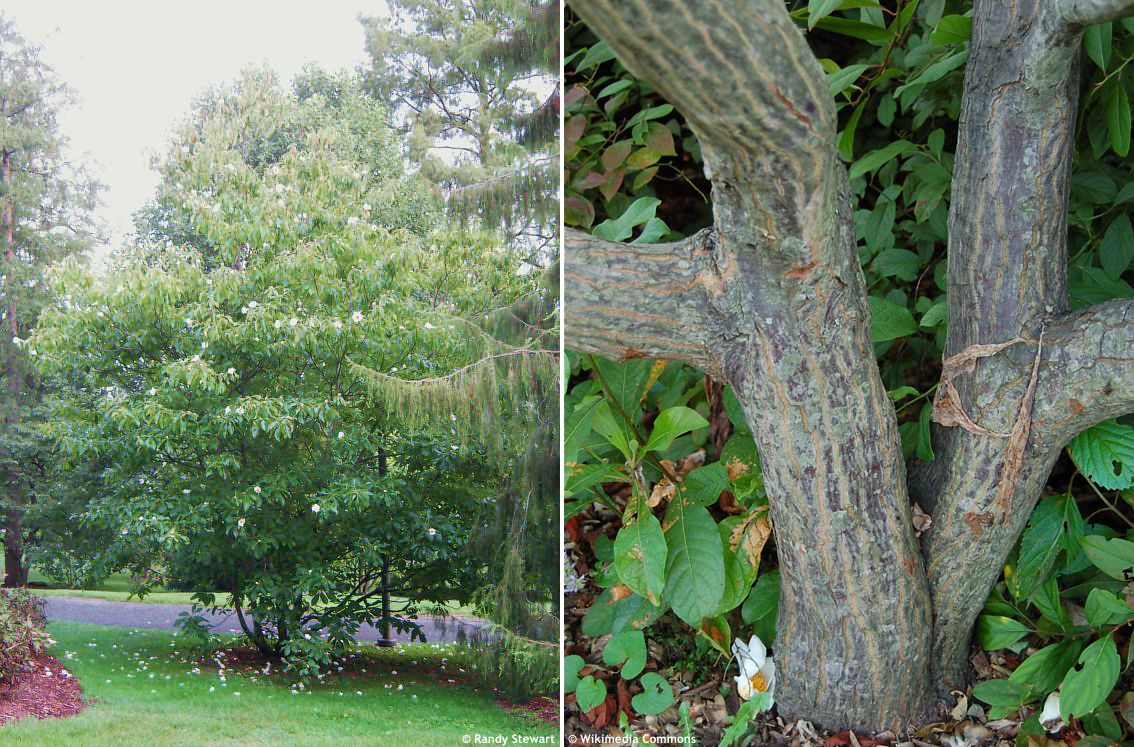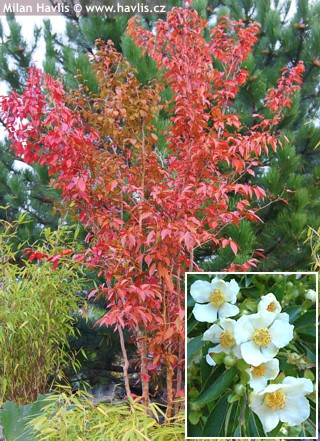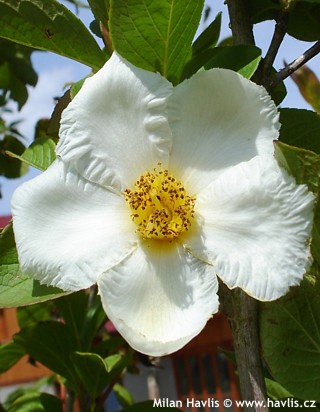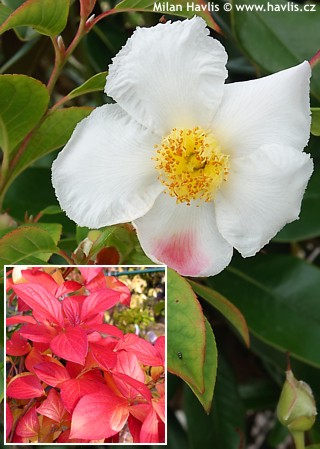Franklinia alatamaha Franklin tree
size/type
small tree,taller shrub
usual height
3-6m
usual width
3-4m
leaves
deciduous broadleaf
colour of leaves
flowers
showy
colour of flowers
blooming time
August-October
location
full sun
soil type
acidic (peaty)
soil moisture requirements
evenly moist (dislikes drought)
USDA zone (lowest)
5b (down to -27°C)
winter protection
for zone 5+6

for zone 7

categorized
Description of the plant:
Rare, beautiful, but extinct. These are three main characteristics of an utterly unique Franklin tree. It comes from the banks of Alatamaha river in south-eastern Georgia, and was firs found and described by John Bartram, a royal botanist of King George III of England in 1765. John and his son collected seeds of the trees and planted them in his nursery in Philadelphia where they thrived. The demand for the seedlings was enormous from the beginning so they kept on producing new plants. This seems to have saved franklinia for the mankind because meanwhile it disappeared from its natural habitat – in 1803 there was not a single plant found at Alatamaha river or anywhere in the wild. When it comes to reasons there are two speculations: it was either harvested by greedy rare plant traffickers who had no idea (or simply didn’t care) that the tree was present only there and nowhere else in the world. Or that cotton producers (nonetheless greedy) kept on enlarging their fields too much and liquidated franklinia’s habitat. In connection to this option there is another theory saying that the cotton guys were innocent (exceptionally) unlike the cotton plant root fungi which spread wide in the soil, and killed franklinia’s tender root system. But good news is that owing to commercial growing of this plant there were 2046 registered plants on monitored locations around the world. Franklin tree is closely related to stewartia or gordonia but is the only plant in its own genus. It is a small, deciduous tree or a large multi-stemmed shrub, valued for profuse flowering of 6-8 cm wide, camellia-like, fragrant, white flowers with numerous yellow stamens. In zone 6 it flowers from late summer (August-October), in hot summer climates flowers appear as early as in July. The plant is quite hardy but in order to set flowers it needs plenty of sun and heat during summer, so continental climates with cold winters but hot summers is preferred to coastal climates where winters are mild but unfortunately so are the summers. Leaves are deciduous, narrowly obovate, rich green in spring and summer, and turn several shades of red in autumn. Perhaps the best show begins when the foliage gains carmine red tones while the plant still produces its snow white flowers.
Franklinia has a reputation of being difficult to grow. Basically, it needs to be treated like a tender highbush blueberry – plenty of peat, extremely well-drained but constantly moist soil, enough nutrients, and full sun without any shade. Unless you are sure about your soil conditions or you know that it is clay, make a large raised bed. It hates drying out but must never stay in standing water. Choose the best location for it in your garden well so that you never have to transplant it again. It may be pruned in early spring, and reasonable and controlled pruning of young plants will make its rather thin framework denser. It is fully hardy to at least -27°C (USDA zone 5b), but plants with mature wood withstand short spells of stronger frost on a protected site of zone 5a.
Last update 09-01-2020
QUICK PRICE OVERVIEW
CURRENTLY SOLD OUT



















